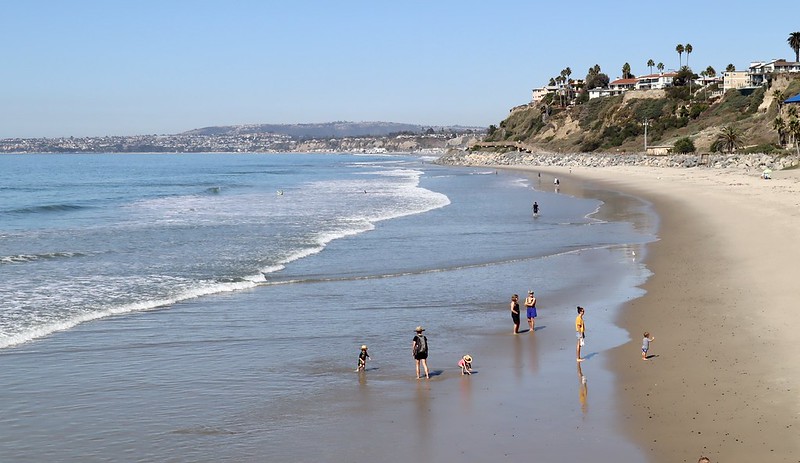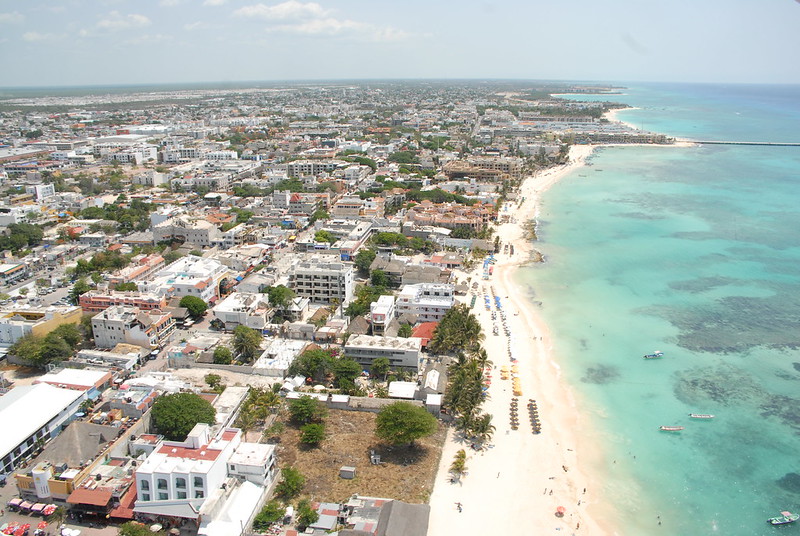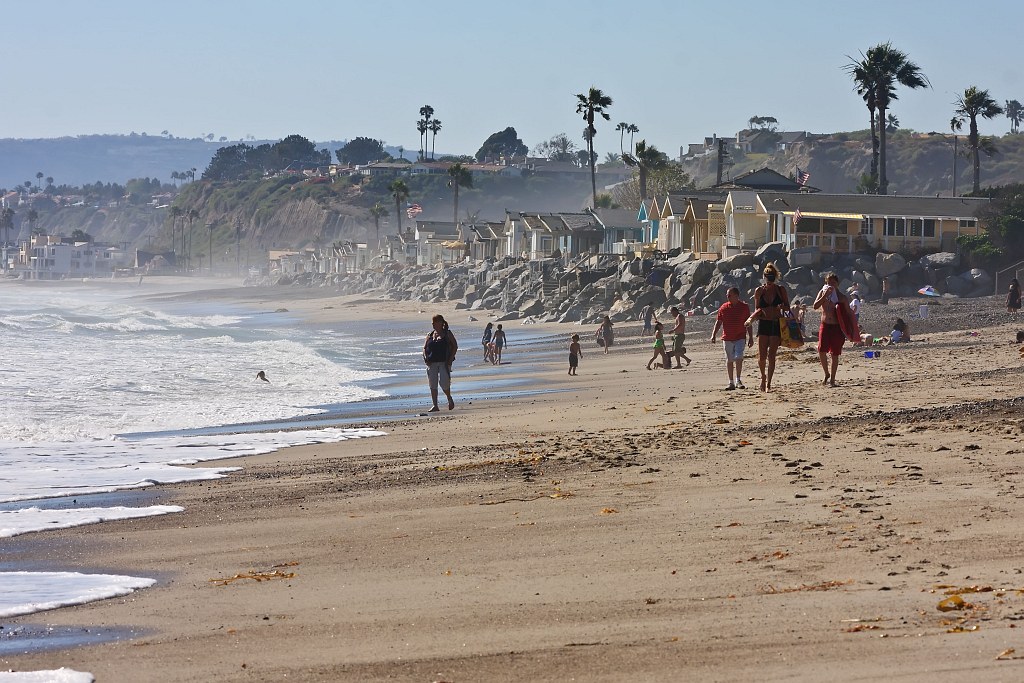Gary Griggs | 26 March 2023
CoastalCare.org has been a leader in reporting on the global impacts of beach sand mining and its negative impact on shorelines. The Santa Aquila Foundation was an important supporter of the awarding-winning film Sand Wars, which was an engaging and behind-the-scenes investigation of this global issue. Vanishing Sands written by Orrin Pilkey, Norma Longo, William Neal, Nelson Rangel-Buitrago, Keith Pilkey, and Hannah Hayes was just published and is as comprehensive a look at beach and river sand mining around the planet.
There have been several recent proposals and some projects actually underway to grind up glass bottles and use this ground glass to replenish beaches. Along most shorelines, other than in tropical environments, the dominant mineral making up the beach sand is quartz, which is silicon dioxide (SiO2), the same elemental composition as glass. While this may initially seem like a good solution for replenishing or nourishing disappearing or narrow beaches, this concept is not a sustainable or effective approach.
Initially derived from silica sand glass is a valuable resource that is already in a pure form that can most effectively be recycled or melted down to make more glass, rather than being put on the beach where it will be lost to the ocean over time as it is carried offshore or alongshore.
The posts highlighted below describe the development of Glass Half Full, a small glass crushing/grinding facility in Louisiana that was conceived of as a way to replenish a retreating shoreline. One catalyst for this effort was the lack of glass bottle recycling facilities in this part of Louisiana. The article states that the college students who initially created this facility have now expanded their efforts to grind up 150,000 pounds of glass each month, which amounts to 75 tons. A cubic yard of sand (or glass) weighs about 1.35 tons, so this 75 tons/month is equal to 55.5 cubic yards, about 5 dump truck loads. With beach nourishment projects typically involving tens of thousands or hundreds of thousands of cubic yards of sand, this very modest amount of glass sand is simply not significant.
Glass Half Full is a creative and innovative company that deserves to be celebrated. All things considered, however, in the big big picture, this same glass could be more effectively recycled and reused as glass products, thereby negating the need to mine even more sand to create new glass products.
Restoring Louisiana’s Shoreline, One Glass Bottle at a Time – GIZMODO

Excerpt:
Before becoming San Clemente’s new coastal administrator last year, the beach has always held a nostalgic place in Leslea Meyerhoff’s heart. “Some of my earliest memories are walking the beach in Santa Monica with my grandma,” she said. “I also recall fond times boogie boarding, collecting seashells or just enjoying a stroll at the beach.”
Additional Reading:
San Clemente voters to decide on sales tax increase for sand-starved beaches
SHARE THIS ARTICLE
How A Used Bottle Becomes A New Bottle - NPR Planet Money

Before becoming San Clemente’s new coastal administrator last year, the beach has always held a nostalgic place in Leslea Meyerhoff’s heart. “Some of my earliest memories are walking the beach in Santa Monica with my grandma,” she said. “I also recall fond times boogie boarding, collecting seashells or just enjoying a stroll at the beach.”..
Additional Related Stories . . .

Is the solution to Playa del Carmen’s shrinking coastline simply moving sand around? – Yucatan Magazine
Before becoming San Clemente’s new coastal administrator last year, the beach has always held a nostalgic place in Leslea Meyerhoff’s heart. “Some of my earliest memories are walking the beach in Santa Monica with my grandma,” she said. “I also recall fond times boogie boarding, collecting seashells or just enjoying a stroll at the beach.”..

San Clemente sales tax ballot measure for beach sand is falling short – the Los Angeles Times
Before becoming San Clemente’s new coastal administrator last year, the beach has always held a nostalgic place in Leslea Meyerhoff’s heart. “Some of my earliest memories are walking the beach in Santa Monica with my grandma,” she said. “I also recall fond times boogie boarding, collecting seashells or just enjoying a stroll at the beach.”..









